Many businesses and individuals use 3D printing due to its ease of operation, accuracy, precision, and suitability for making products with complex designs. The process is suitable for both industrial grade and commercial grade products, and many people use it in DIY or outsource to 3D printing services. Whichever option, it is important to consider the 3D printing service cost before diving into the process.
This article explores the key factors that influence the costs of 3D printing services. Additionally, it provides insights into calculating and minimizing the expenses associated with 3D-printed parts.
What Determines 3D Printing Service Cost?
Capital is a huge decision when deciding on the right 3D printing service. Therefore, it is important to know about several factors that can determine the amount of capital you spend printing or outsourcing your project. Below are the important factors to consider in the relationship between cost and 3D printing.
3D Printer Price
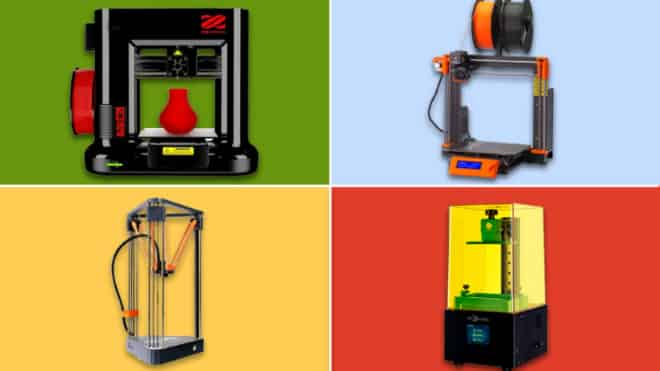
Different 3D Printing Technologies
3D printing is an additive technology that involves making a 3D printed product from a CAD model. However, 3D printers operate based on different technologies. This affects the 3D printer’s mechanism, speed of production, suitable materials, post-processing finishing, and, more importantly, the cost of the service or 3D printed parts.
When comparing 3D printing technologies, two notable ones are Fused Deposition Modeling (FDM) and Stereolithography (SLA). FDM is cost-effective, using thermoplastic filaments for part building. SLA offers high accuracy and versatility but comes at a higher cost. Other options like SLS, SLM, and DMLS are pricier due to their rarity and ability to work with metals. Consider these factors when choosing a 3D printing technology.
3D Printer Setup Price
Setting up an industrial 3D printer can be challenging, and many individuals prefer to avoid potential damage or incorrect settings on a newly purchased device. To stay ahead, most people opt to hire technicians for assistance. However, this convenience comes with a cost.
The setup price of a 3D printer is not fixed, as it varies depending on the expertise of the technicians and the complexity of the printer itself. For instance, the setup cost for FDM printers typically falls within the range of $200 to $1000.
3D Printer Operation Price
To address the inquiry regarding the cost to 3D print parts, it is crucial to consider the expenses associated with operating a 3D printer. This explanation will be presented through a straightforward illustration.
Let’s say you decide to buy a $2000 3D printer that you plan to use for 10 hours every day for 2 years. Now, ignoring the cost of repairs, maintenance, and electricity, let us calculate:
10 hours x 365 days x 2years = 7300 total hours
$2000 ÷ 7300 = ~$0.27/hr
By performing a basic calculation, we can determine that the operational cost of a $2000 3D printer amounts to $0.27 per hour. Using this information, we can estimate that a 3D model requiring approximately 3 hours of printing time would cost around $0.81 (0.27 x 3).
Hence, having a comprehensive understanding of the precise costs involved in 3D printing a model becomes an essential aspect when accurately estimating the overall expenses of a 3D printing service.
Maintenance Cost
While 3D printers deliver high-quality prints, regular maintenance is essential to sustain their performance and print quality. However, maintenance comes with associated expenses.
These costs primarily include replacing 3D printer parts and cleaning them. The total cost depends on the complexity of the printer and the specific parts involved. Typically, this expenditure can range from a few hundred dollars for simpler models. For instance, the maintenance cost for an FDM printer typically falls within the range of $200 to $500. If one prefers to enlist the assistance of an expert, the maintenance costs will increase due to the additional fees charged by the expert.
3D Printing Material
Materials used in making strong 3D printing keep increasing as knowledge of the field keeps progressing. This increases the flexibility in making products, their features, and the cost of 3d printing parts. The effect of materials on 3D printed parts, and 3D printing service cost is profound as accessibility, rarity, etc., plays a huge role. Common materials used in 3D printing are:
Powder and Filament
Powders and filaments are the cheapest and the most common kinds of materials used in 3D printing. They are thermoplastics, i.e., when you melt them, you can reshape and remold them till the desired outcome is produced.
Non-experts and those who just engage in 3D printing as a hobby like to use these thermoplastics (common ones being PLA and ABS) because they are inexpensive. For example, filaments could be as low as $20 per kg. However, while cheap, using these materials in producing top-quality products is a tough task as you will spend a lot of money and time perfecting the 3D models.
Resin
Resins are arguably the best 3D printing materials as they are easy to work on it and post-operation is very easy. However, unlike plastics and filaments, they are quite expensive. Consequently, utilizing resins in 3D printing projects inevitably increases the overall cost of printed parts, resulting in higher prices for services that employ them.
High-End Materials
3D printing service cost tends to increase when you use high-end materials. High-end materials are not readily accessible and common, leading to them being more expensive. For example, working with metals such as titanium, cobalt, aluminum, nickel, and alloy steel is very expensive. This is due to the need for specific technologies, e.g., DMLS which from the previous section is shown to be expensive.
The Size and Complexity of the 3D Model
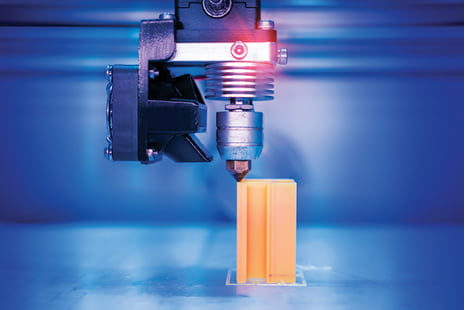
In designing 3D prints, a 3D model is essential to make a precise and accurate 3D print as it provides the essential details needed for the production process. Acquiring a 3D model simplifies the process of estimating the associated expenses for a 3D print or a 3D printing service.
The complexity and size of the model affect the final price of the 3D print. Complex designs might need accurate and precise 3D printing technology, and this will affect the cost. Understanding the complexity and size of the 3D model will help prevent capital wasting and time-wasting.
Part Volume
The part volume determines the amount of material which also indicates the printing technology. Although 3D printing has many advantages for mass production, the large part volume will require a large number of materials and a longer printing time. Also, the size of the material will determine the post-processing operations, which is another factor affecting 3D printing service cost.
Post-Processing for 3D Printed Parts
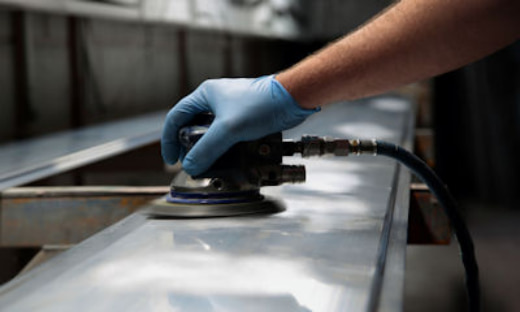
After printing a product, many surface finishing solutions are used to improve the quality and functionality of the 3D prints. These post-processing procedures add a few bucks to the cost of 3D printed parts or 3D printing services. Top post-processing process and their relationship with cost include:
Polishing
Polishing is a post-processing process suitable for achieving the smoothest possible surface for a 3D print. It involves sanding the 3D print, rinsing the prints, then applying the polisher. Polishing is very expensive as there is a need for dimensional accuracy and a highly moderate skill level.
Electroplating
This involves coating the 3D prints with specific metals such as gold or silver using electrolysis. The 3D print is the cathode while the metal is the anode, and both are dipped in an electrolyte. On passage of current, there is a deposition of the metal ion on the 3D print.
Electroplating is suitable for improving the strength and appearance of 3D prints. However, the process is very expensive due to the mechanism and the coating metal.
Epoxy Coating
Epoxy coating involves coating the 3D prints with epoxy resin and a hardener to improve their strength and seal the porous part of the prints. Generally, it is an effective and costly protective process. The cost of the process depends on the type of epoxy coating your get and the experience of the person coating it.
The Cost of Some 3D Printed Projects
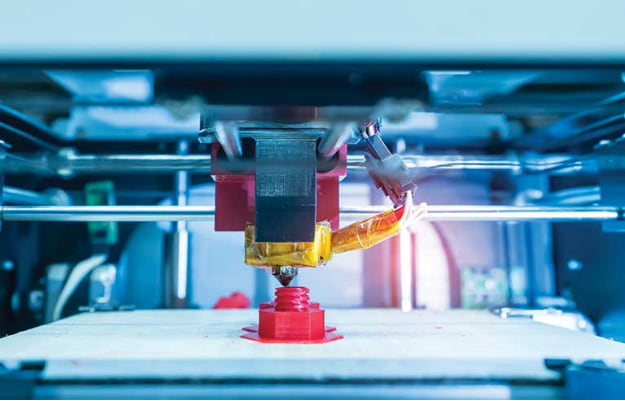
3D printing a part requires you to have knowledge about how to price the cost of 3D printed parts, or you can get help from a 3D printing service calculator. From here, it would be easy to make an estimation for your product. Here, we will focus mainly on the filament, but the same principle is applicable to other materials.
The typical cost of a filament utilized in 3D printing amounts to $25 per kilogram. By considering this cost along with the weight of the objects intended for printing, it becomes straightforward to calculate the expenses associated with producing such prints. Now, let’s proceed with determining the cost to 3D print or a selection of common products.
Cost of Printing a Prototype
A simple prototype weighing 200 grams would cost:
Since the cost of filament is $25/kg
Changing to gram becomes $25/1000 g= $0.025/g
Therefore, the cost of making this 200g filament would be 200 x 0.025 = $5.
However, this is not always the case as prototypes could even be smaller, weighing merely 20g. In the same manner, they could be large objects, i.e., a lot of kgs.
Prototype 3D printing service could cost more depending on the model size, complexity, and the experience of the team handling the process.
Cost of Printing a Phone Case
Using the case of an iPhone X, which weighs 35g, as an example, we can calculate the cost of 3D printing this phone case.
We multiply the weight of the phone case by our cost per printing a gram of an object, $0.025/g.
$0.025/g * 35 = $0.86.
Some phone cases with fine details and designs that need to be carefully finished would surely cost way more.
Cost of Printing a Mask
Masks used by our favorite superheroes come in different sizes and designs. Let us make use of a simple Batman mask weighing 150g as an example.
To calculate the 3D printing cost of such a mask, we simply multiply the weight by our $0.025/g.
150g * $0.025/g = $3.75.
Cost of Printing a Mug
3D printing is not just for plastic parts and it has applications in creating mugs. Using a mug weighing 250 grams, we will multiply the weight of our mug by the cost of creating a 1g object.
250g * $0.025/g = $6.25.
The above calculation is for the cost of plastic for those owning a 3D printer. If you outsource, the 3D printing service cost increases based on model complexity and size, post-processing, team experience, quality prints, and branding.
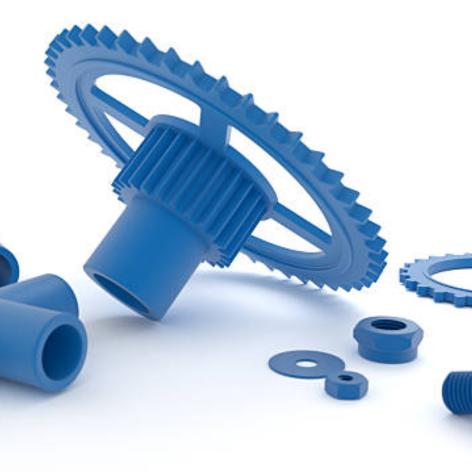
Get 3D Printed Parts With Competitive Pricing!
Looking for top-notch 3D printing services for your project? Look no further than RapidDirect. As a trusted and renowned provider of rapid prototyping services, we offer professional solutions tailored to meet your needs. With our expertise, we guarantee high-quality results.
We provide an instant quote feature and offer valuable Design for Manufacturing (DfM) feedback, optimizing your manufacturing process from the start. Contact us today.
How to Reduce the 3D Printing Cost
The cost of 3D-printed parts is influenced by two key factors: machine time and material usage. Therefore, achieving a lower 3D printing cost necessitates finding a balance between these aspects. Here are some common and technical approaches that can help reduce the overall cost:
Use a Cheaper Material
As you should have known by now, the kind of materials used in your 3D printing goes a long way in the total cost spent. So, you should use a printing material with a balance of quality and cost for your prints.
Choose the Right Process
Different 3D printing technology has different costs. This can be due to the sophistication of the machine or the material. Therefore, it is better to choose the technology within your capital range without compromising on functionality.
Save Printing Material
The larger the 3D model, the higher the 3D printing service cost. Reducing the size of the model means a lesser volume, which indicates a lesser amount of material needed for the print and, of course, less cost. However, when reducing the size of the model, you should not alter its functionality. Below are a few ways to reduce the amount of material.
Hollowing
Some 3D-printed parts do not require full solidness. Therefore, hollowing will reduce the number of materials you use which is tantamount to less cost.
Remove Support Structures
Support is integral in making parts that overhang. However, it uses more materials, requires post-processing, and increases the cost of production. Therefore, you should eliminate the need for support by designing an overhang angle greater than 450 and splitting your model.
Reduce Infill Percentage
You can also reduce the cost by reducing the infill percentage. This will also preserve the materials and improve productivity. This is an ideal method when the product does not need to meet certain structural or mechanical needs.
Choose a Greater Layer Height and Resolution
The layer height will determine the resolution of the printed item. Low layer height prints will have a smoother surface but increase production time and automatically the cost. Therefore, you should increase the layer height. However, while increasing the layer height, consider whether it will affect the appearance and functionality of the 3D printed parts.
Select the Appropriate Finish
Post-processing finishes in 3D printing come with varying costs. For instance, painting is cheaper but less durable than electroplating. Researching the best technique and its cost is essential to make informed decisions.
Conclusion
The cost of 3D printing should not be considered a limiting factor for those who want to enjoy the art of 3D printing. While it does not change or cannot be overemphasized, it is important to know about the different factors that determine the cost.
Do you have a 3D printing project that requires high-quality 3D printing services? Reach out to us at RapidDirect. RapidDirect is a reputable rapid prototyping service provider that provides professional solutions and services. We also offer an instant quote and DfM feedback which improves your manufacturing process.
FAQs
Yes, 3D printing is cost-effective!
As a one-step process, 3D printing saves cost and time. Being an automated process, it gives room for multitasking. You could set up your printer and go on doing something else.
Yes, 3D printing is the same as additive manufacturing, while rapid prototyping is a subset of the process. Additive manufacturing is just a way of describing what 3D printing as products are from layer by layer. 3D printing is the procedure; rapid prototyping is the outcome of that procedure which means rapid prototyping is a subset of 3D printing.


